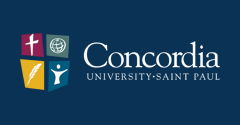Document Type
Poster
Publication Date
2025
Abstract
Purpose/Hypothesis:
Reverse total shoulder arthroplasty (RTSA) has become an efficacious surgical procedure for people with massive rotator cuff tears and concurrent glenohumeral osteoarthritis. While shoulder biomechanics and functional outcomes after a RTSA have been studied extensively, there is limited research on the relationship between shoulder girdle osteokinematics and functional outcomes. The purpose of this study was to investigate the correlation between shoulder girdle osteokinematics and functional outcomes, using the Penn Shoulder Score (PSS), in patients who underwent RTSA. It is hypothesized that there would be a significant correlation between osteokinematic variables and the PSS. Participants: 20 participants (10 male) who underwent RTSA between 2020 and 2023. The mean time elapsed between surgery and data collection was 23.17 (12-50) months. The average age of participants was 75.8 (63-89) years and all lived within a 45-minute drive of the university campus.
Materials and Methods:
IRB approval was obtained through both the university and the healthcare system at which participants underwent surgery. The Polhemus G4 three-dimensional electromagnetic motion capture system was used for collecting osteokinematic data for scapular external rotation, posterior tilt, and upward rotation during three repetitions of humeral elevation in each of three planes: abduction, flexion, and 45 degrees anterior to the frontal plane to approximate the plane of the scapula. SPSS was utilized to assess correlations between the PSS and all osteokinematic variables using a Pearson product-moment correlation.
Results:
No violations of normality were observed for any of the variables. There was a moderate positive correlation between the PSS and humeral abduction (r = 0.479, p = 0.032) and between the PSS and scapular upward rotation (r = 0.446, p = 0.049). The median score on the PSS was 86.8 (IQR = 22.3). Mean humeral abduction was 80.28 + 20.72 and mean of scapular upward rotation was 36.71 + 14.74. No other variables demonstrated correlations.
Conclusion:
The data analyzed from our study showed glenohumeral abduction and scapular upward rotation are positively correlated to long-term functional outcomes as measured with PSS, following a reverse total shoulder arthroplasty.
Clinical Relevance:
While flexion and scaption are considered more functional planes of motion, this study showed a positive correlation between abduction and PSS. This finding may inform a continued focus on humeral abduction ROM for optimal functional gains during the post-op rehabilitation of RTSA. The significant correlation between scapular upward rotation and PSS reinforces the appropriateness of addressing short-term scapular and glenohumeral mechanics during post-op RTSA physical therapy. These findings may contribute to more standardized RTSA protocols which have been highly variable up to this date.
Recommended Citation
Hamilton, Linsey PT, DPT, SCS; Anderson, M; Garofalo, R; Nolan, L; Quinton, C; and Rundquist, Peter J. PT, PhD, "Correlation Between Shoulder Kinematics and Functional Outcomes After Reverse Total Shoulder Arthroplasty" (2025). DPT Capstone Posters. 39.
https://digitalcommons.csp.edu/dpt-posters/39

